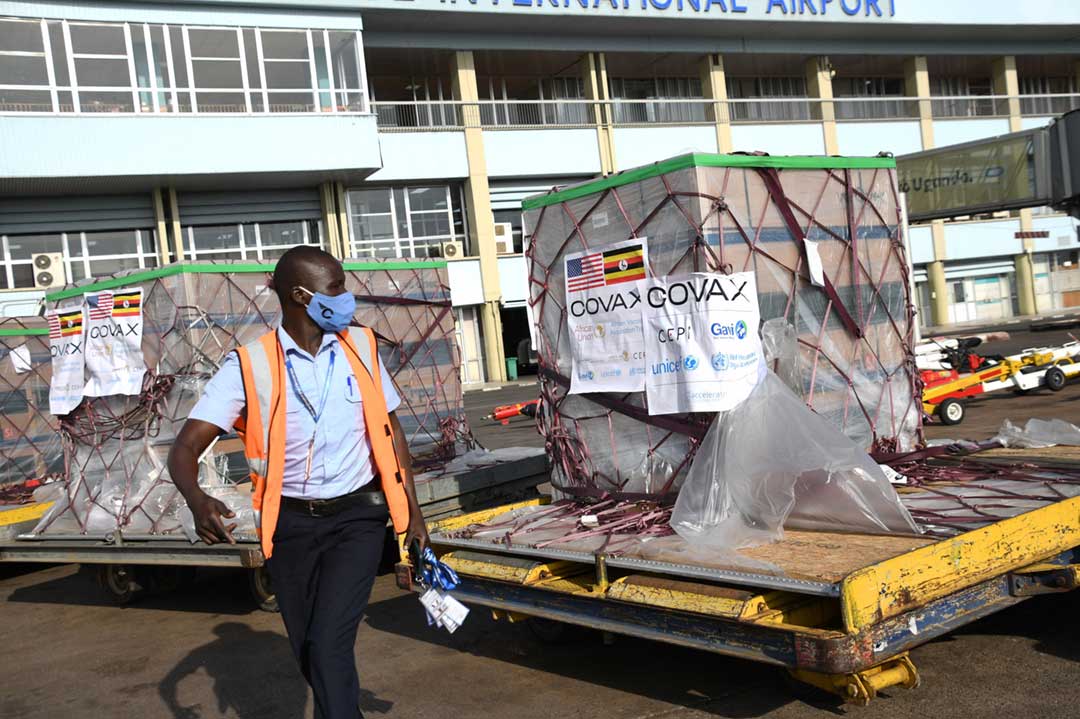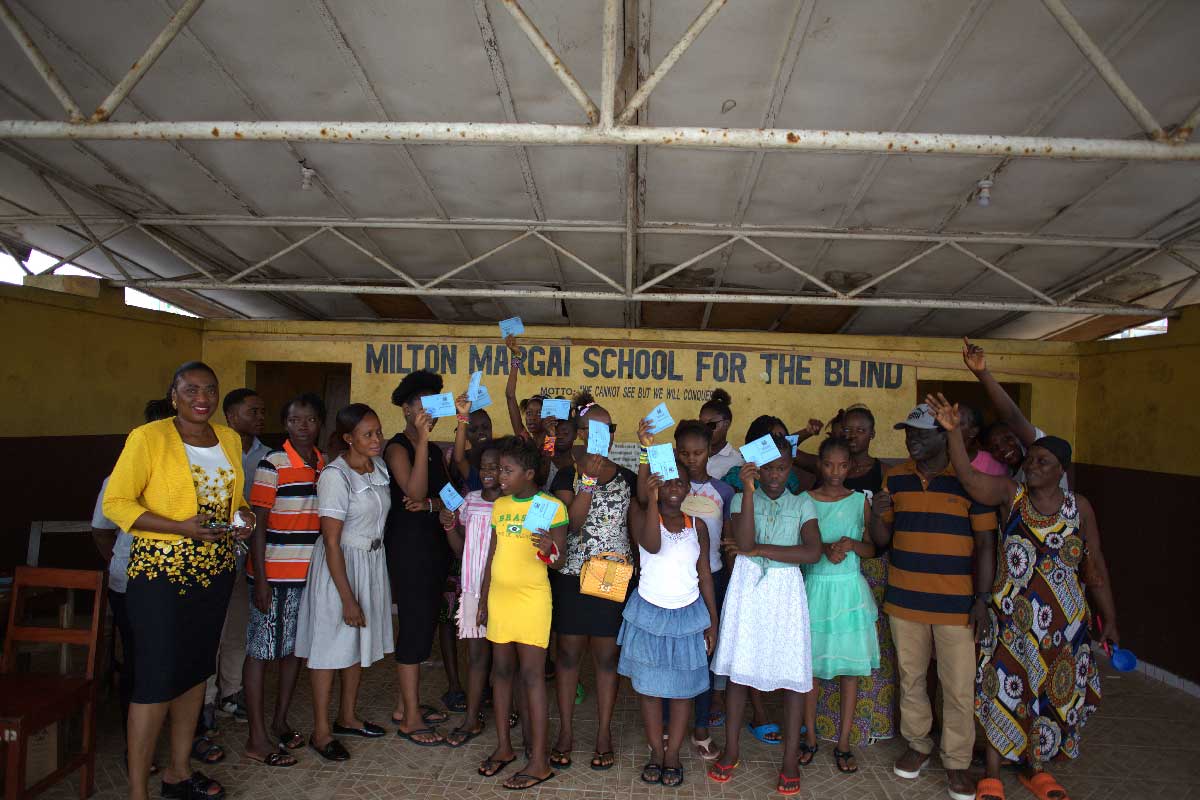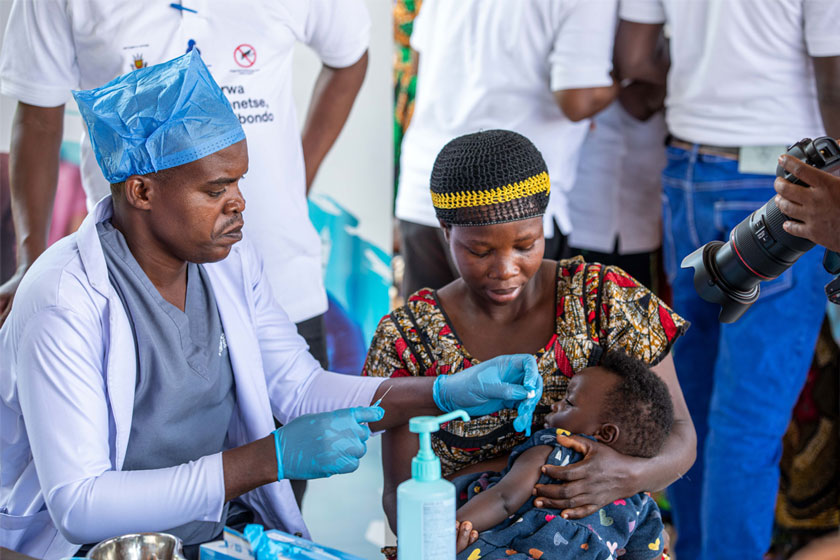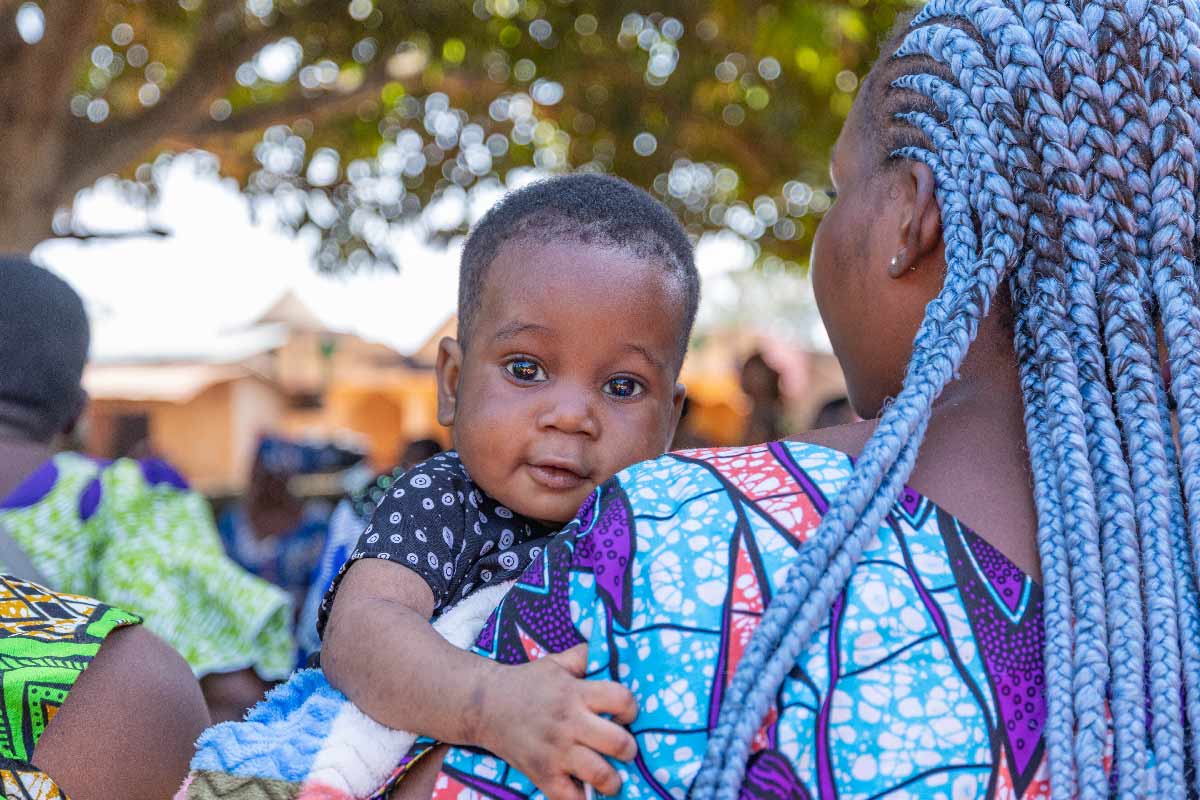Five key factors that allowed COVAX to deliver two billion COVID-19 vaccines
The COVAX Facility set up to ensure that COVID-19 vaccines got to the most vulnerable, no matter where they lived, was unprecedented, and evolved many times over the pandemic. Here are five key factors that led to one of the biggest emergency vaccine responses ever.
- 15 February 2024
- 7 min read
- by Gavi Staff

Getting vaccines from manufacturing sites into people's arms is a complex process even in normal conditions. During the biggest pandemic in 100 years, these challenges become magnified, which meant COVAX also had to adapt to ensure the billions of vaccines it procured on behalf of countries across the world could be delivered quickly and effectively.
Getting vaccines to those who need them requires an extraordinary amount of logistical planning, which can be challenging in an unfolding pandemic when countries aren't sure how many doses they will need, and may not have the infrastructure to deliver doses even when they do receive them.
To mark the publication of Gavi's new analysis paper on this delivery effort, here are five of the key factors that helped achieve one of the largest global vaccination campaigns ever attempted.
1. The largest deployment of ultra-cold chain equipment in history
In low- and middle-income countries, one of the hurdles affecting vaccination programmes is inability to ensure a "cold chain", which is where vaccines are stored at low temperatures from the moment shipment arrives to the time they are injected into someone's arm. Unstable electricity supplies or inadequate health system infrastructure can risk vaccines being stored at incorrect temperatures, which can render them useless.
Like many other vaccines, COVID-19 vaccines were distributed by plane, truck, motorcycle and in the most remote places, by foot. The challenge was that the first COVID-19 vaccines needed not just standard vaccine cold storage temperatures of 2–8°C but ultra-cold storage at between -90°C and -60°C.
During the pandemic, 73 lower-income countries received support to increase their cold and ultra-cold chain. COVAX's response was the largest deployment of ultra-cold chain equipment in history. Although Gavi had supported the installation of cold-chain equipment previously, this new initiative was complex for various reasons. Ultra-cold chain equipment is more complicated to install and requires specialist training to maintain. Moreover, shipping and installation was happening at a time when most of the world had shut down to stop COVID-19 spreading.
Despite these hurdles, COVAX financed, coordinated and delivered 948 ultra-cold chain freezers to nearly 70 countries during 2021 and 2022.
2. Adapting the response by redeploying doses
Getting vaccines to those who need them requires an extraordinary amount of logistical planning, which can be challenging in an unfolding pandemic when countries aren't sure how many doses they will need, and may not have the infrastructure to deliver doses even when they do receive them. Sometimes, doses end up being wasted through poor planning or unexpectedly low uptake.
In late April 2021, the Democratic Republic of the Congo (DRC) handed over half a million doses of COVID-19 vaccines that they had received from COVAX the previous month. Those half a million doses were part of a consignment of 1.3 million doses redeployed to other African nations: Angola, Central African Republic, Ghana, Madagascar and Togo.
The DRC government knew it would be unable to administer them before their expiry date, and so it alerted COVAX knowing that the vaccines would be used to protect people elsewhere, and that it could receive its allocation at a later date when it was able to deliver them to people.
Redistribution of doses is not always this smooth, as countries can sometimes hold on to vaccines till they are expired and it's too late to give them away. On the back of this experience, COVAX developed a vaccine redeployment policy, launched in 2021 when supplies of doses were still stretched thin, to support countries wanting to ensure doses they could not use did not go to waste. Almost 2 million doses were redeployed in this way. COVAX worked with the African Union to ensure that dose donations were only accepted once a country was ready to take them on.
3. Focusing on the most vulnerable
COVAX was designed to reduce vaccine inequity, and by January 2022, although more than 12 billion doses of COVID-19 vaccines had been delivered worldwide from all sources, it was clear that inequity was still rampant – low-income countries (LICs) had only received 0.2 billion doses, a shocking 1.6% of the number of doses delivered. At that time, only 13% of people in LICs had been fully vaccinated with a primary series of two doses, compared to 60% of the global population.
The reasons varied from operational challenges to a lack of health care workers, issues in accessing vaccines, and demand issues, such as a lack of information, vaccine hesitancy and COVID-19 misinformation. To address this inequity, Gavi, WHO and UNICEF created the COVID-19 Vaccine Delivery Partnership (CoVDP) in January 2022 to provide focused support to the 34 countries that were at or below 10% primary series coverage at this time.
CoVDP focused especially on country engagement, demand planning, providing operational funding, delivery coordination and reaching high-priority groups: health care and other frontline workers, older adults and those living with comorbidities.
By June 2023, just six countries had primary series vaccine coverage below 10%, compared to 34 in January 2022. Four – Madagascar, Yemen, Haiti and Burundi – were dealing with humanitarian situations.
4. Delivering vaccines in humanitarian settings
Delivering vaccines in lower- and middle-income countries (LMICs) often requires getting vaccines to people in settings beset by conflict. By the end of 2022, of the 31 countries classified as having humanitarian emergency response plans, 26 were countries that Gavi supported with COVID-19 vaccine deliveries.
Across these countries, more than 250 million people are estimated to have needed humanitarian assistance. As of the end of 2022, half of all COVID-19 vaccine doses delivered in those 31 countries (411 million doses) were provided to their governments through COVAX, making it the largest source of vaccines in humanitarian contexts.
In 2020 and early 2021, Gavi collaborated with the United Nations' Inter-Agency Standing Committee (IASC) – a forum for UN agencies including WHO and UNICEF that are involved in humanitarian work – to develop the COVAX Humanitarian Buffer, a safety net of last resort to ensure access to COVID-19 vaccines for the most high-risk and vulnerable populations: those in humanitarian settings, including refugees, migrants, asylum seekers, stateless people and other vulnerable groups.
5. Integrating services and strengthening health systems
The pandemic disrupted many routine immunisation programmes, and even as those were being resumed in 2022, it was clear that COVID-19 vaccination would still be needed to be delivered by health systems. Gavi started working on supporting countries in integrating COVID-19 vaccination into regular health service delivery systems.
In July 2022, Gavi announced an additional US$ 667 million in COVID-19 vaccine Delivery Support (CDS) that would, among other things, support the integration of COVID-19 vaccination and routine immunisation. The new funds were also used to tackle gaps in vaccine delivery and strengthen engagement.
For example, US$ 25 million was earmarked for direct support to civil society organisations to help unblock critical delivery, access and uptake bottlenecks, and reach under-served and unserved populations, including high-risk groups and those in humanitarian settings. Another US$ 30 million was reserved for emergency funding to be jointly managed with the CoVDP for immediate needs in the 34 low-coverage countries
This funding provided important health system strengthening benefits in many countries – 71% of lower-income countries supported by COVAX reported strengthening of their cold chain infrastructure, while 76% were able to make progress in the digitisation of health data. A further 62% of countries reported integrating COVID-19 vaccination into their routine immunisation programmes.
One country that saw its health system strengthened through COVID-19 vaccine delivery was Somalia. In January 2022, the COVID-19 vaccine coverage rate in Somalia was just 5%. Campaigns enabled 90% of the high-risk and older adult population to be reached, and CDS funding was used to help scale up the country's cold-chain capacity. By May 2023, the country's COVID-19 vaccine coverage rate had reached 41%.
The investments made to boost COVID-19 vaccine delivery have had collateral benefits, including building an online digital system and dashboard to allow real-time vaccination monitoring; training staff in risk communication and community engagement; and procuring and installing four ultra-cold chain units and 25 solar direct drive vaccine refrigerators that rely on solar energy rather than mains electricity.
Read the new Gavi Analysis Paper, Learning from COVID-19 to support vaccine delivery during future health emergencies, here: https://gavi.org/news-resources/knowledge-products/learning-covid-19-support-vaccine-delivery-during-future-health-emergencies
More from Gavi Staff
Recommended for you








